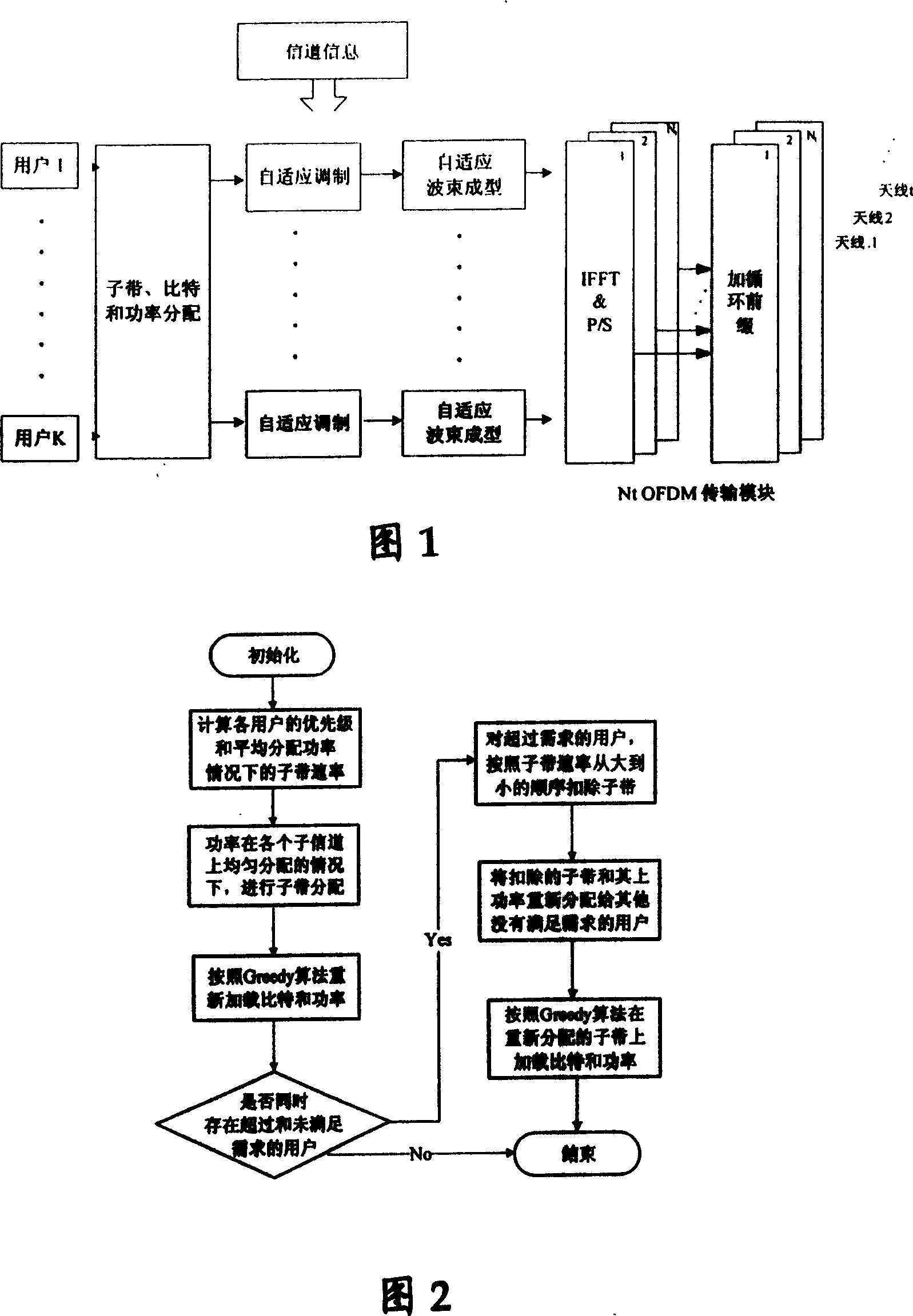Resource allocation method of the multi-user MIMO-OFDM system of the QoS
A MIMO-OFDM, quality of service technology, applied in diversity/multi-antenna systems, space transmit diversity, communication between multiple stations, etc., can solve the problem of insufficient use of space channel resources, system performance needs to be improved, signal-to-noise big difference
- Summary
- Abstract
- Description
- Claims
- Application Information
AI Technical Summary
Problems solved by technology
Method used
Image
Examples
Embodiment Construction
[0035] There are N sub-bands in the system, and each sub-band is composed of R adjacent sub-carriers as a minimum frequency allocation unit, thereby reducing the amount of user feedback information. The minimum time unit for scheduling is a slot (slot), which consists of a fixed number of OFDM symbols, and it is assumed that the channel is quasi-static in a single slot. In each time slot, the user feeds back the channel response H to the base station. The number of transmitting antennas on the base station side is Nt, there are K users in the system, and each user has Nr receiving antennas.
[0036] The scheduler of the base station classifies the arriving packets according to the user ID (Identification) of the arriving packets at the upper layer, and stores them in FIFO (First-in, First-out) queues corresponding to each user, assuming that these queues are infinitely long. Considering the real-time business here, the scheduler records the arrival time of the business packet...
PUM
 Login to View More
Login to View More Abstract
Description
Claims
Application Information
 Login to View More
Login to View More - R&D
- Intellectual Property
- Life Sciences
- Materials
- Tech Scout
- Unparalleled Data Quality
- Higher Quality Content
- 60% Fewer Hallucinations
Browse by: Latest US Patents, China's latest patents, Technical Efficacy Thesaurus, Application Domain, Technology Topic, Popular Technical Reports.
© 2025 PatSnap. All rights reserved.Legal|Privacy policy|Modern Slavery Act Transparency Statement|Sitemap|About US| Contact US: help@patsnap.com



